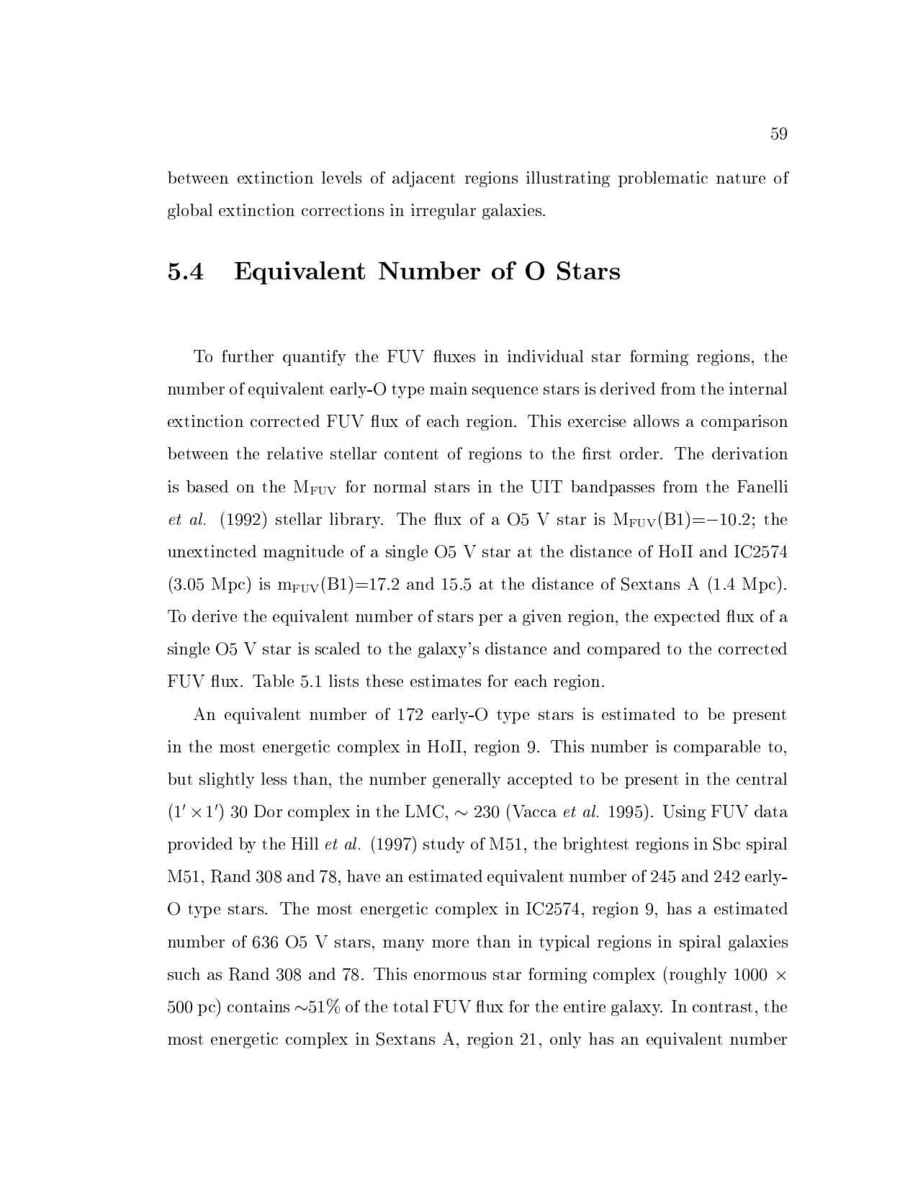
59
between extinction levels of adjacent regions illustrating problematic nature of
global extinction corrections in irregular galaxies.
5.4 Equivalent Number of O Stars
To further quantify the FUV uxes in individual star forming regions, the
number of equivalent early-O type main sequence stars is derived from the internal
extinction corrected FUV ux of each region. This exercise allows a comparison
between the relative stellar content of regions to the rst order. The derivation
is based on the M
FUV
for normal stars in the UIT bandpasses from the Fanelli
et
al.
1992 stellar library. The ux of a O5 V star is M
FUV
B1=
,
10
:
2; the
unextincted magnitude of a single O5 V star at the distance of HoII and IC2574
3.05 Mpc is m
FUV
B1=17.2 and 15.5 at the distance of Sextans A 1.4 Mpc.
To derive the equivalent number of stars per a given region, the expected ux of a
single O5 V star is scaled to the galaxy's distance and compared to the corrected
FUV ux. Table 5.1 lists these estimates for each region.
An equivalent number of 172 early-O type stars is estimated to be present
in the most energetic complex in HoII, region 9. This number is comparable to,
but slightly less than, the number generally accepted to be present in the central
1
0
1
0
30 Dor complex in the LMC,
230 Vacca
et
al.
1995. Using FUV data
provided by the Hill
et
al.
1997 study of M51, the brightest regions in Sbc spiral
M51, Rand 308 and 78, have an estimated equivalent number of 245 and 242 early-
O type stars. The most energetic complex in IC2574, region 9, has a estimated
number of 636 O5 V stars, many more than in typical regions in spiral galaxies
such as Rand 308 and 78. This enormous star forming complex roughly 1000
500 pc contains
51 of the total FUV ux for the entire galaxy. In contrast, the
most energetic complex in Sextans A, region 21, only has an equivalent number
